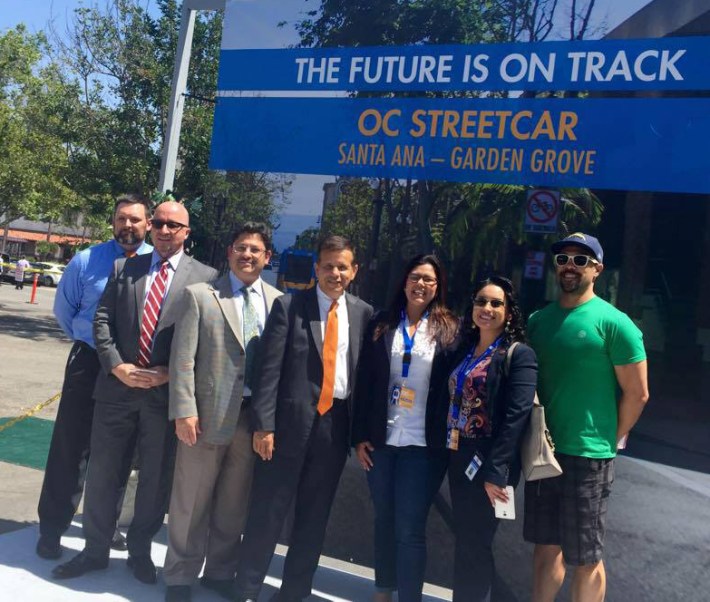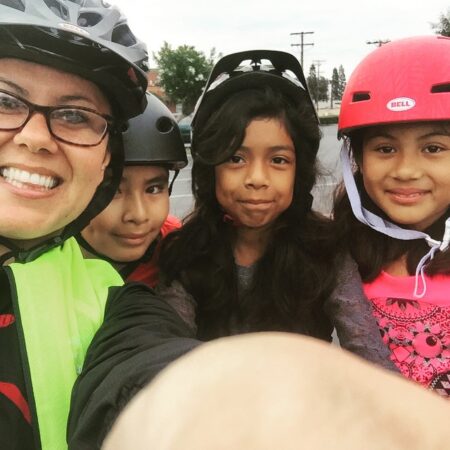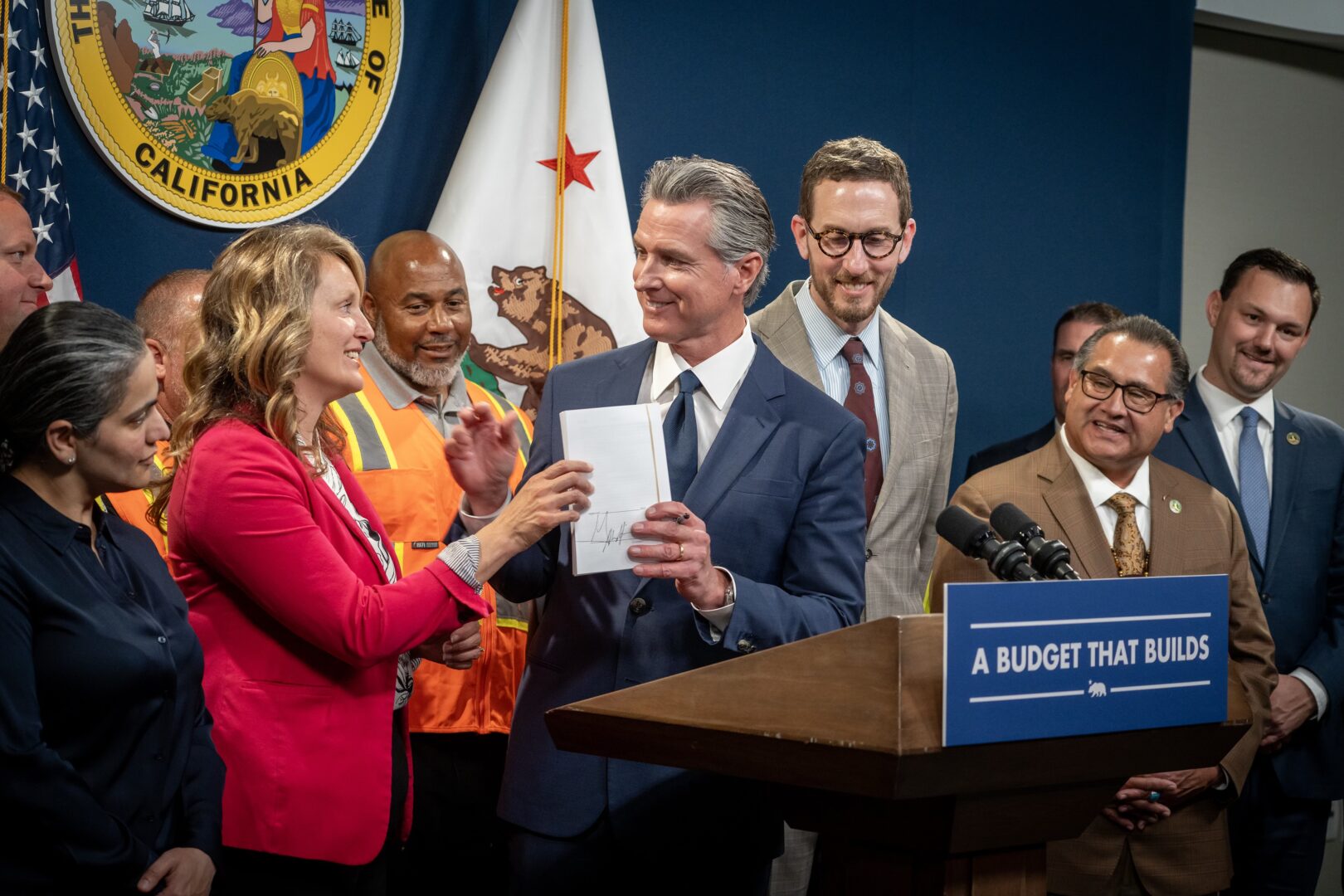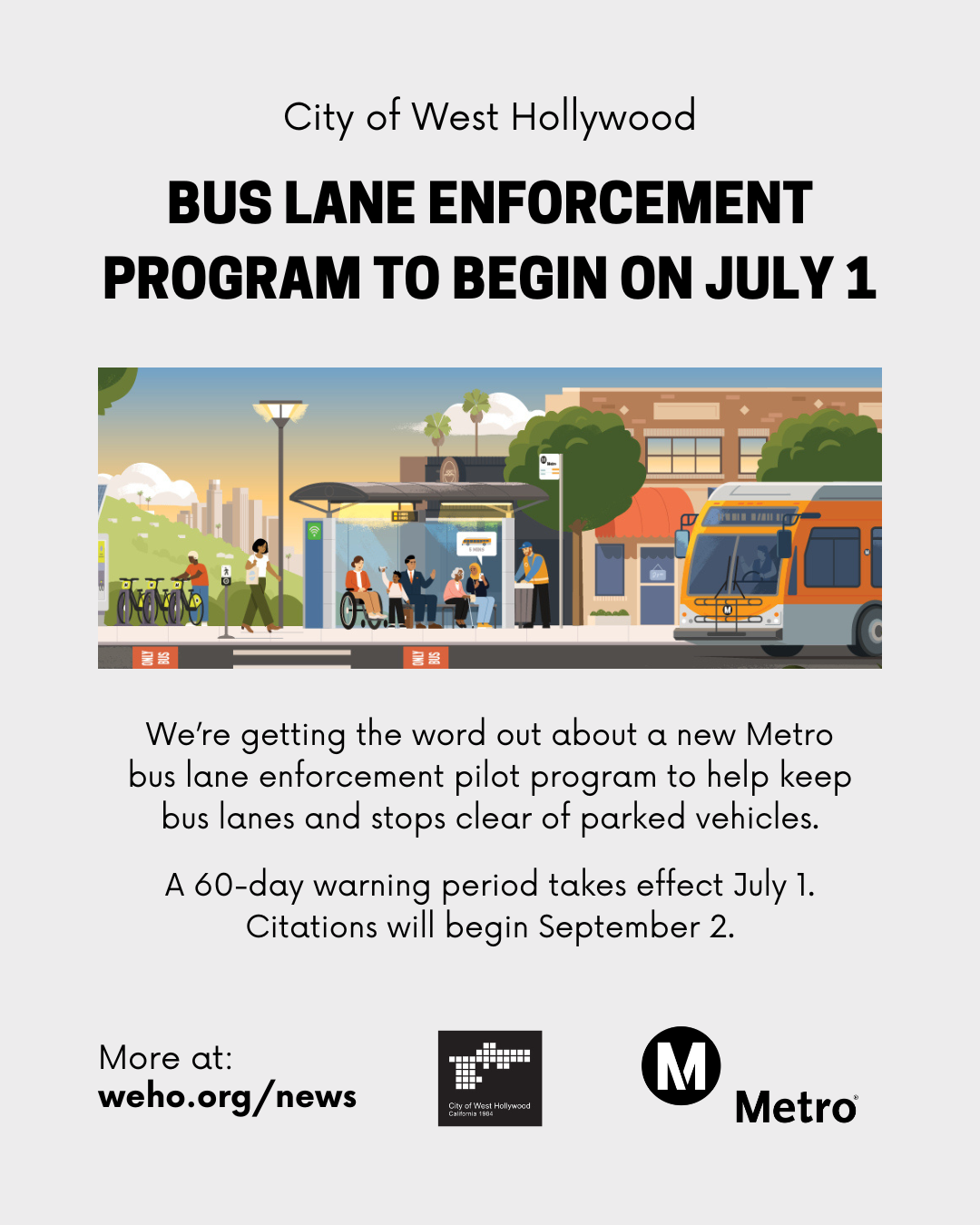
Michele Martinez, a City Council member for the City of Santa Ana, says she’s an avid cyclist, but she doesn’t ride on city roads. After being hit twice by automobiles while riding in Santa Ana, she would rather load her bike in her car and take it to the Santa Ana River trail than ride on local streets, she said.
”I won’t ride on the roads here until [we build] the infrastructure that is needed,” Martinez said.
Martinez, one of the most active and vocal advocates of active transportation in Santa Ana and Orange County, is currently serving her last term on the Santa Ana City Council. She has been a longtime advocate of active transportation at local, regional, state, and federal level. She pushed to add the position of active transportation coordinator for the city of Santa Ana, advocated for including Vision Zero in the Santa Ana General Plan’s Circulation Element, and currently serves as the first vice president of the Southern California Association of Governments (SCAG) while also serving on SCAG’s transportation committee.
Her active transportation advocacy has trickled into her work as executive director of the Alliance for a Healthy Orange County (AHOC). Noticing a knowledge gap between residents’ understanding of government bureaucracy and progressive transportation policies, systems, and infrastructure, Martinez sought funds from The California Endowment for AHOC to launch a resident training program to cultivate the next generation of transportation advocates. [Full disclosure: AHOC was awarded the funds, but Santa Ana Active Streets coalition (SAAS) is administering the project’s first iteration this year. This author is an active member of SAAS.]
In our roughly half-hour discussion, Martinez spoke of the importance of Vision Zero in Santa Ana, of prioritizing safety when installing infrastructure improvements--especially where crime elements exist--and of what she envisions for her next role as she aims to become president of SCAG’s Regional Council next year.
What tapped you into the active transportation scene initially?
I think it was in 2010. I was working for The Eli Home and I was invited for the first time to participate in OCTA’s bike rally for Bike to Work Week by Will Kempton, who at the time was the CEO of OCTA. I didn’t have a bike. I hadn’t been on a bike since I was twelve years old. So I bought [a little blue bike from the Eli Home thrift store] for $100. I made a commitment online to ride to work, from Santa Ana to Anaheim. Prior to that, the whole week I was riding my bike and I realized there weren't any bike lanes, and I was having to ride on the sidewalk and sometimes against traffic. When I was on the road I almost got hit by a semi truck.

I started to see the challenges of people that were walking and biking. It was how they get to work, and it was unsafe. I had the opportunity to speak at the OCTA bike rally, and I mentioned that I was going to make it a priority. I thank them for allowing me to participate because it opened up my eyes to the need for making sure that we have safe transportation for everyone, whether you’re taking the bus, you’re walking, [or] you’re taking your bicycle.
You’ve been very influential in planting seeds to change the philosophy around transportation, at the city, county, and regional levels. How has your vision changed around active transportation since you’ve started, and what is your vision right now in terms of instilling active transportation in the County?
When I first started I was just trying to put in a bike lane. Then I realized that a bike lane is not the key: it’s really about safety. I use the analogy of a park. People say we need more parks in Santa Ana. Yeah, you can build parks, but if they’re not safe, children and families are not going to go to the park because they’re infested with gangs. So, why build a park to fill it with gang members? It needs to be lighted, it needs to have families there to take away that bad element. Why build bike lanes on Bristol, next to cars that are going fifty to sixty miles an hour? You’re not going to be safe. You’d rather ride on the sidewalk. So I had to educate myself, understanding that safety has to come first. You also have to look at the levels of service, and make sure that the road is designed for all modes of transportation.
From a policy standpoint, the emphasis has been more on safety, and that’s the direction I’m taking the City of Santa Ana. Now that OCTA [has created a Pedestrian Action Plan], the next step is bicycles, and with the leadership of Paul Martin and a lot of the board members at OCTA, there’s a lot of support there to take those next steps. They understand that safety’s first.
When you connect safety with active transportation, you have policymakers open up their eyes and ears because you’re talking about safety. When you just talk about putting in a bike lane, they say, “No one is going to use it, [so] who cares? My kids are not going to ride; I’m not going to let my wife ride.” But when you talk about kids dying, it opens people’s hearts and mind, and they start to say, ‘We gotta do something.’ That’s the kind of advocacy I’ve been pushing for and I will continue to push, because safety is number one. You can’t just expect to “build it and they will come” if it’s not safe.
In envisioning a Santa Ana that is more bikeable and walkable, is there a sweet spot where that change happens?
We’re wrapping up all the planning. We’re updating our circulation element. We’re updating our bike master plan in conjunction with the regional bike master plan. We’re doing the first pedestrian master plan--that’s in draft form. We did a Complete Streets Plan for downtown Santa Ana. We’re doing our Vision Zero plan right now.
We should have all that by the end of the year, and then I [will be able to] tell you how much money we need to spend to make Santa Ana a safe, bikeable, and walkable community. I think we have the grid to do so, but we haven’t invested any infrastructure dollars.
You have people riding and biking, but not in a safe way. That’s why we have the pedestrian fatalities that we have today, and some of the bike incidents that we’ve had in the past couple of years. The numbers are still fairly low, but we do have more people walking than biking in this community. It’s my hope that we will make a commitment, whether it’s $100 million or whatever, to put the needed infrastructure projects in play in a way that is sustainable and institutionalized.
This year, with grants [from various sources] we have over $9 million being invested in infrastructure, but that’s just a drop in the bucket. [We're going to need] $100 million, and we need to make a commitment about how we’re going to get those funds.
I’m trying to push a transportation infrastructure tax, with a ten-year sunset, so that we’ll be able to fund projects on our own; so we wouldn't have to count on the county or the state. We could control our own destiny, and I believe that we should. I believe if residents really want to have a safe, walkable community, and a bikeable community, we need to invest. We can’t wait on grants, we can’t wait ten-plus years to get something done.
[But] we can get it done [if] we’re willing to invest a half-cent or a one-cent tax in building safe infrastructure for our community.
Is it realistic to expect the new Santa Ana streetcar to grow throughout the county?
I believe so, and I believe [it will work] in Santa Ana and in Garden Grove and in Anaheim, and when it eventually goes to the airport. It is needed.
We need different modes of transportation. Light rail and streetcars are needed; shared parking and bike-share is needed; carshare is needed; Uber; you name it--we need all those forms of transportation to make sure that we provide all options to everyone. That doesn’t mean the car is going to go away, but it will give people the flexibility to choose how they want to get to and from work or to an entertainment venue.
As you continue to climb up the ladder at SCAG, how do you see your evolving role as a leader at the regional level?
Active transportation is my top priority. Together with the councilwoman from Newport Beach, Lesley Dagel--who’s no longer there--we put together a resolution to do this whole Vision Zero, Be Street Smart [safety campaign effort]. SCAG received $3.1 million for a grant after I pushed [that] through.
At the same time I really want to focus on goods movement, which plays a big role in congestion and traffic, with these big semi trucks coming through the 710 corridor. [There's also the question of] environmental justice. There are air quality [issues], plus the amount of time that people have to be stuck behind those trucks, especially in low-income communities. We have to figure out a strategy for goods movement, and find funding to alleviate that corridor. So that’s my second top priority.
And I am really trying to highlight a lot of the cities in Los Angeles, smaller communities that don’t understand the roles of SCAG and need to know that there are resources available to help their communities. In Orange County, for the most part, there are only a few cities that are receptive to SCAG. It’s unfortunate. I will continue to push to get active transportation dollars and help cities in Orange County apply for funds, but I understand that I’m very limited in what I can do. So as the president of SCAG next year and as current vice president, [I want] to focus on trying to help these smaller communities [to understand] the role that SCAG can play to help shape them to be healthier.
Housing is another thing. We need to connect housing with the workforce, and with transportation. They all have to be aligned. One in four children in the southern California region lives in poverty. We need to figure out a way to [build] transit oriented development so that people can spend their money helping their children get educated and giving them a good quality of life. Unfortunately many can’t [do that] because rent is expensive, and multiple families live together in apartments or houses. Or they’re sharing cars. Children at very young ages are working to help support the family, and it’s all because of the cost of transportation and housing. And so we have got to align those things and work with the state of California and our legislators to figure out a way to make public transportation and housing affordable.
Kris Fortin is a Latino urbanist, and is currently serving in Orange County as an AmeriCorps VISTA (Kris' comments do not reflect the position of the AmeriCorps VISTA program). Kris is also an active member with the Santa Ana Active Streets coalition. Kris used to write stories for Streetsblog LA's Eastside coverage from 2012-2013. Following Streetsblog, he was a reporter with the Orange County Register.





